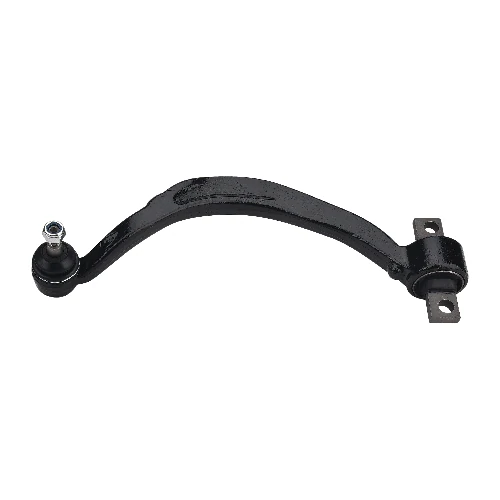Automotive suspension systems rely on precise engineering and robust manufacture of key components like lower control arms. These link steering knuckles to the vehicle frame, guiding wheels and enabling critical articulation. As one of the highest-force-bearing parts, lower control arm production requires advanced industrial expertise. Let’s take a look inside modern lower control arm factory.

Raw Material Selection
Top manufacturers source premium grade steel alloys formulated for high strength yet ductility. Common options include fully-killed hot-rolled steel, case-hardened steel alloyed with boron or chromium, and 4130 chrome-moly tubing resistant to fatigue. Material certifications ensure chemical composition and uniform mechanical properties batch-to-batch. Steel arrives in coiled strips or rods ready for fabrication.
Primary Forming
Control arm shapes involve complicated bends, flanges and radii that mandate CNC equipment. Robotic press brakes fold steel blanks into near-net contour preforms through progressive dies. Others use six-axis machining centers and end mills to rough-cut main profiles. Custom programs coordinate multiple tool changes for superior dimensional accuracy. Precise setup locates parts repeatably.
Secondary Operations
Pre-formed shells undergo follow-up work like deburring, drilling, honing and counterboring to complete features. Often a robotic FMS (flexible manufacturing system) handles these tasks, reorienting parts automatically between workstations. This maintains tight production scheduling while freeing labor for value-added tasks. Manufacturers carefully choose compatible coolants for machining.
Heat Treatment
Industrial furnaces at controlled atmosphere harden steel components via case carburizing or induction hardening for maximum fatigue strength and abrasion resistance. Quenching with oil or gas transforms microstructures for a precisely calibrated surface hardness profile meeting specs. Near-infrared imaging checks processes’ completeness.
Finish Machining
Completely hardened arms require final fine surfacing on high-precision machining centers. Ball end mills and reamers scrupulously cut bearing journals and bolt holes for tight tolerances. Surface grinders true flanges flat while maintaining critical dimensions. Inspection checks cuts are burr/deformation-free for long service life.
Assembly & Testing
Bonding bushing inserts, greasing zerks and torquing fasteners assemble finished control arms. Clean rooms prevent contamination. Product testing uses custom rigs simulating road loads, impacts and corrosion to verify durability for warranty cycles before paint/coat. Metrology ensures tolerances remain within specifications.
Quality Assurance
Rigorous quality programs employ statistical process controls, SPC, to monitor every stage and catch anomalies early. Regular assessment with 3D scanners, bore gauges and material analysis techniques certify components meet OEM fit, form and function demands for direct vehicle assembly line use. Digital traceability codes parts throughout production.
With lengthy capital investment plus stringent engineering oversight of every process, lower control arm factories set industry benchmarks for strength, precision and quality deliverable year after year. Their innovations enhance safety, performance and longevity in vehicles worldwide.
